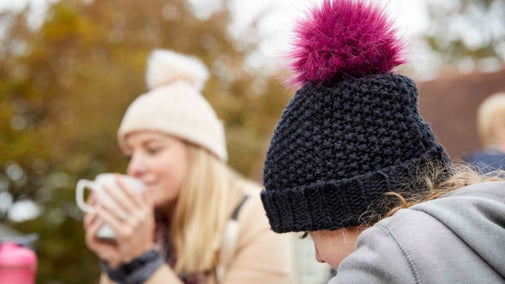
Discover more at Stourhead
Find out when Stourhead is open, how to get here, the things to see and do and more.

The Stourhead estate is home to around 2,500 acres of countryside, with an Iron Age hillfort, the 160ft-high Alfred's Tower, ancient woodland, and a variety of flora and birdlife among the things to look out for.
This triangular tower, located two miles north-west of the garden, was designed in the 18th century by Henry Flitcroft for Stourhead's second owner, Sir Henry Hoare II.
Named after King Alfred, who raised his standard here in 870, the tower commemorates the accession of King George III in 1760 and the end of the Seven Years War three years later.
Look out for the wildflower meadow surrounding the tower. Roe deer can usually be seen in the woods nearby, especially at dusk and dawn.

A designated Site of Special Scientific Interest (SSSI), White Sheet Hill offers far-reaching views, with Stourhead house and Alfred’s Tower to the west, and the Blackmore Vale to the south-east. It is archaeologically diverse, with a Neolithic enclosure dating from approximately 3,000BC, an Iron Age hillfort and Bronze Age barrows dating from 3,200–4,200 years ago.
The area is home to diverse wildlife, including rare butterflies. The chalklands are an ideal home for the Adonis blue. The male butterfly is a metallic blue colour, while females are a less vibrant brown.
The marsh fritillary butterfly can also be seen flying across the downland. June is the best time to catch a glimpse of one.
White Sheet Hill is a 2.5-mile drive from Stourhead. To get there by car, turn right out of the main Stourhead car park and follow the B3092 towards Frome for one mile. Turn right just before the Red Lion pub and follow the road to the car park.
The streams that feed the lake in Stourhead's garden start at Six Wells Bottom. From the dam, you can look east into this open valley, which once formed part of an enclosed, medieval deer park.
St Peter’s Pump was erected in the valley in 1768 over the first springs of the Stour. The pump formerly stood near St Peter’s Church in Bristol.
While visiting Six Wells Bottom, listen out for red kites, a large bird of prey. The species was saved from extinction in the 1980s and 1990s, and can occasionally be seen gliding over the Stourhead estate looking for prey. They have a distinctive forked tail and will often call out during flight.
The waterwheel at Turner's Paddock dates back to the 19th century. It provided water to Stourton parish until the 1950s, pumping it up from the lake. A watermill was recorded on the same site in the Domesday Book.
Turner’s Paddock is named after the landscape artist J M W Turner, who painted this spot in 1799.

The parkland at Stourhead spans three sides of the Palladian villa. The area behind the house is called Great Oar Meadow. This hay meadow has had no fertilisers added for 14 years and is now a habitat for rare, native orchids and other flora. Within the meadow, you can also see the Obelisk, which was built in 1746.
Roe deer are often seen in the area, jumping hedges and running across fields. They rest during the main part of the day, but are more active at dawn and dusk.
If you visit during the winter, look out for the golden plover in the parkland. A migratory bird species, it's often found in Britain throughout the colder months. You'll see them in large flocks on Stourhead's open farmland, along with lapwings.

Find out when Stourhead is open, how to get here, the things to see and do and more.

Find out about visiting the Stourhead estate with your dog, from where you can and can't take them, to the facilities available to dog owners. Stourhead is a three pawprint rated place.

Stourhead is home to one of the world's most famous gardens, with myriad temples, grottos, trees and water features to explore. Read more about what you'll see during your visit.

Stourhead house was one of the first Palladian-style villas to be built in England. Find out more about the Hoare family's home and why they decided to make this their main residence outside of London.

Find out everything you need to know about booking a group visit to Stourhead, from admission prices and benefits to educational tours.

Discover the best places to eat, drink, and buy gifts and souvenirs during your visit to Stourhead.

Plan a visit to one of the special countryside places in our care and discover the benefits of being in the great outdoors. Pack your walking boots and get ready to explore woodlands, valleys and rivers.

Explore some of the finest landscapes in our care on coastal paths, accessible trails, woodland walks and everything in between. Find the best places to walk near you.

Wiltshire has a vast amount of countryside to explore including woodlands and trails. Get outside and enjoy the space with your family and friends.